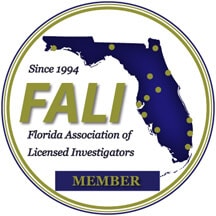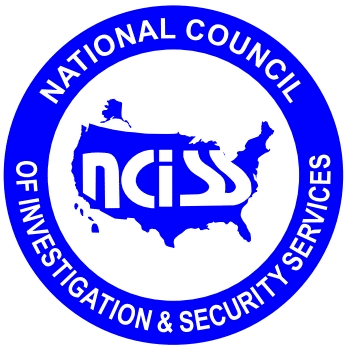Transparency and Community Policing
Improving transparency and community policing with Tracers
One of the best ways to make a community safer is to engage in community policing strategies. Rather than relying solely on the police for safety and security, community policing strategies recognize that communities know themselves more than anyone else. With a community policing strategy, your law enforcement agency can position itself as a helping hand, rather than as the authority. A public records search with Tracers can make it easier for you to create that framework.
What is community policing? Incorporating the community first
Community policing is all about the community. At the end of the day, it’s important that any community policing strategy puts the community first, rather than whatever you’ve been doing in the past. Police presence, for example, may be negligible if a community is able to build a strong and thoughtful community policing presence instead. Internal policing should always win out over external policing, and maximizing your law enforcement agency’s support is key.
- Many communities are able to police themselves, especially if a law enforcement agency is able to provide support.
- Your agency should put the needs and desires of the community first to maximize a strong community policing concept.
- Having public records tools that you then can pass on to the community is an important part of making sure they’re able to police themselves.
Get started with Tracers
For information about how we collect, store and use your personal data, please read our Terms of Service and Privacy Policy.
Rely on big data and community policing to identify potentially unsafe members
Identifying potentially unsafe members of a community is an important part of community policing. It also makes things more transparent; people will be less likely to rely on internalized biases if they can instead utilize external data to determine who might be unsafe in the community. When you data from a public records search engine, a community policing group may be able to identify these potentially unsafe members of the community more quickly.
- Data is an important part of identifying potentially unsafe members of a community because it’s an evidence-based approach.
- Building strong community policing strategies relies on rethinking things from the ground up, and that includes identification.
- A public records search engine can help you maximize a community’s response to their current crime situation.
Make a change from within using community policing solutions
Community policing will not always be easy to implement. Especially if you’re working in a community that’s never tried to police itself, you’re probably going to have a difficult time at the very beginning. The key here is to make sure you’re okay with starting from the very bottom and working your way up. When you’re able to implement new, wide-reaching protocols that put the community first, you’re more likely to make a serious impact on the community around you.
- Community policing strategies aren’t always easy, but it’s possible to institute them in a community in a simple and straightforward way.
- Helping a community adapt to this new type of policing requires that you stay open to all types of change, no matter what that means.
- When you commit to making a change toward community policing strategies, you can use a variety of tools to do so.
Big data and law enforcement can help communities feel safer and be safer
It’s not enough for communities to just “feel” safer. Some communities with heavy police presence will “feel” safer, but that feeling of safety doesn’t always translate into actual safety for the members of the community. Prioritize making these communities actually safer. When communities are safer, residents will start to feel safer, but when residents feel safer, that doesn’t always translate into genuine safety. Start with a state of being safe.
- The disconnect between a feeling of safety and a state of safety can sometimes be significant.
- Community policing can make a community become safer while not skimping on the feeling of safety.
- It’s important that you make your community safer, which may mean doing things differently than you have in the past.
Maximize your community policing strategy with Tracers data
A community policing strategy tends to make communities safer both in thought and in fact. If you’re able to focus on community policing over carting in officers from out of town, you’re more likely to obtain crime reduction. Tracers data can help you keep the community safer, whether you’re handling a crime or you’re working on prevention.
When you use Tracers data for your law enforcement agency, you can gather information quickly and easily. It’s simple to use a public records search engine to gather information about past criminal records, assets, address history, property records, and anything else the community may need to be safe. Share information with your community to bolster their safety first and foremost.
More information
What is transparency and community policing?
One of the best ways to make a community safer is to engage in community policing strategies. Rather than relying solely on the police for safety and security, community policing strategies recognize that communities know themselves more than anyone else. With a community policing strategy, your law enforcement agency can position itself as a helping hand, rather than as the authority.
Who can use transparency and community policing?
Community policing is all about the community policing itself, but it also should be used by law enforcement. Police presence, for example, may be negligible if a community is able to build a strong and thoughtful community policing presence instead. Internal policing should always win out over external policing, and maximizing your law enforcement agency’s support is key with transparency and community policing.
What does transparency and community policing involve?
Transparency and community policing involves accessing information that can help you identify access to potentially unsafe members of the community in order to help communities police themselves. Identifying unsafe members also helps make things more transparent; people will be less likely to rely on internalized biases if they can instead utilize external data to determine who might be unsafe in the community.
What do I need to get started with transparency and community policing?
To get started implementing a transparency and community policing strategy, you need access to a public and private records search engine like Tracers. When you use Tracers data for your law enforcement agency, you can gather information quickly and easily. It’s simple to use a public records search engine to gather information about past criminal records, assets, address history, property records, and anything else the community may need to be safe. Share information with your community to bolster their safety first and foremost.




